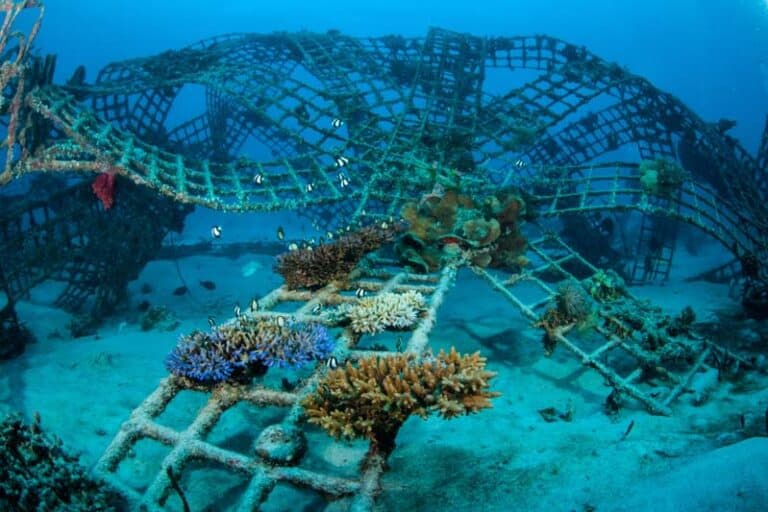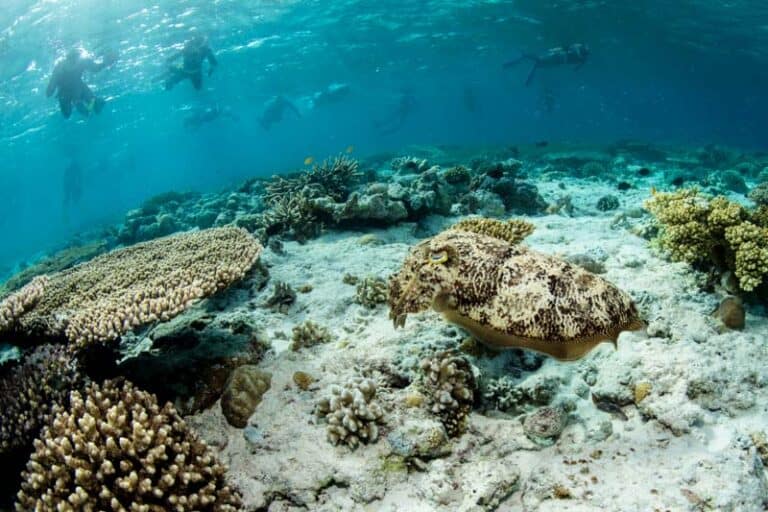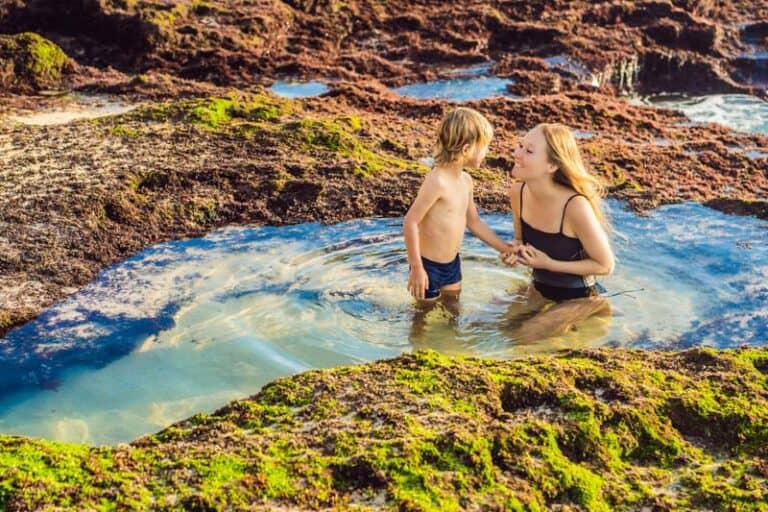Lying in the center of Coral Triangle, Raja Ampat diving is known as one of the best dive sites in the world, offering endless tropical marine biodiversity to discover. Before visiting Raja Ampat diving highlights, please ensure you know some information about Raja Ampat, including the entrance tags that you should buy there and the best things to do besides diving.
Raja Ampat diving highlights and conditions
With over 553 coral reef species, 1470 fish species, eight whale species, seven dolphin species, and dugongs, sharks, nudibranch, turtles, manta rays, etc., Raja Ampat diving highlights are actually the biodiversity of the marine life itself.
The water might not be as clear as most of the time in Komodo Island – you can expect 10 meters (32.8 ft.) up to 30 meters (98.43 ft.) visibility – but you can see much more and more unique creatures during one dive, particularly the sleepy wobbegong shark, nudibranch species, pelagic fishes, sharks, and manta rays. The currents vary from none to very strong, and depth ranges from 10 meters (32.8 ft.) to 40 meters (131 ft.), depending on the dive locations.
To explore Raja Ampat diving highlights, you can stay in one of the dive resorts or make a liveaboard trip all year along with no specific wrong diving time. With a liveaboard, you can reach more and further dive sites, although it is more expensive than dive resorts.
The closest hyperbaric chamber is located in Waisai City, Raja Ampat. Although Raja Ampat diving is suitable for all levels of certification, it is better to have at least 20ish log dives to dive there due to its remote diving locations.
Best Raja Ampat dive sites
Raja Ampat dive spots cater to all levels of certifications and are most easily accessible by boat. These are the best dive sites of Raja Ampat diving highlights:
The Passage
In the southern of Raja Ampat, there is an approximately 25-meters-wide (82 ft.) the channel between Gam and Waigeo islands, where the ocean meets the jungle. Due to its strong current, you can do a drift diving in this dive site, or dive from another entry point with less current to do muck diving to find nudibranch among the mangrove roots. Another dive site here is called The Cave or Passage Cave, where you have a chance of seeing the crocodiles.
Cape Kri
Cape Kri is somewhere you can have an enjoyable dive for all levels of divers, among the coral reefs and the record-breaking 283 species found in a single dive on the steep slope of the colorful hard and soft corals. If you are lucky, you can see some manta rays, carpet sharks, wobbegong sharks, and more creatures than you could imagine.
Mike’s Point in Dampier Strait
This Raja Ampat dive site is where you can dive along the walls and caves arose due to the explosion carried out by U.S. Air Force in World War II because it looked like a Japanese warship from the air. You can expect to find a group of sweetlips, or try to find the Spanish mackerel, reef sharks, epaulet sharks, turtles, and even sea snakes.
Sardines Reef
Around the oval-shaped reef in the middle of some open ocean, you can spot some less common species, like oceanic triggerfish, bumphead parrotfish, and Napolean wrasse. You might be overwhelmed with the sheer numbers of fish you find here, just as other divers who finally claim it as the most favorite dive spots in Raja Ampat.
Fabiacet
This Raja Ampat dive site offers one of the best visibility for diving – up to 40 meters (131 ft.) visibility. Its crystal clear water in the 40 meters (131 ft.) of depth might make you regret if you don’t bring your wide-angle camera lens to capture the beauty in this site, including the chance to see the great hammerhead sharks that sometimes come up from the deep to check out the conditions in the shallower side – such one of the most amazing Raja Ampat diving highlights you could see.






